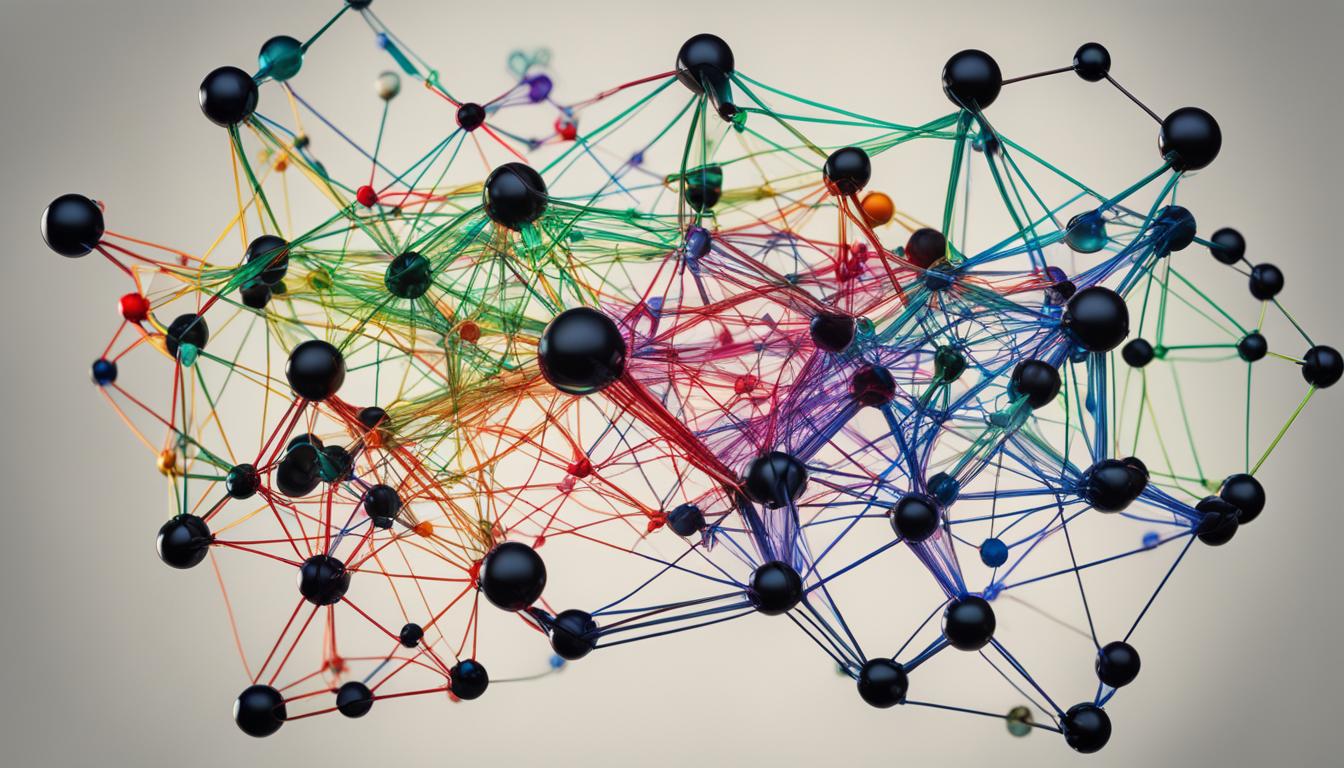Welcome to our comprehensive guide on Search Engine Entity Recognition. In today’s digital age, where the importance of search engine optimization (SEO) in improving website ranking and visibility cannot be overstated, becoming proficient in entity recognition techniques is essential. By implementing entity recognition, you can enhance your web content, improve organic search results, and gain a competitive edge over your competitors.
At [Our Company], we are dedicated to helping you navigate the complex world of SEO and master the art of entity recognition. In this guide, we will dive deep into the importance of entity recognition in SEO, various techniques for implementation, and the impact it has on your website’s organic search results.
From content optimization to keyword research, on-page optimization, and off-page optimization, our guide will provide you with valuable insights and practical tips to optimize your web content effectively. We will also explore how search engine algorithms work and how you can leverage entity recognition to improve your website’s rankings.
Key Takeaways:
- Entity recognition is crucial for SEO and can significantly impact website ranking and visibility in organic search results.
- Techniques like content optimization, keyword research, and on-page/off-page optimization can enhance entity recognition and improve search engine rankings.
- Search engine algorithms rely on entity recognition to understand the context and relevance of web content, providing more accurate search results to users.
- Implementing structured data, schema markup, and strategic keyword optimization can boost entity recognition and improve website performance.
- The future of search engine algorithms is heading towards a more entity-based approach, emphasizing the importance of entity recognition in SEO strategies.
What is Named Entity Recognition (NER)?
Named Entity Recognition (NER) is a technique used in natural language processing (NLP) to detect and classify named entities such as person names, location names, and company names. It involves identifying important chunks of text and categorizing them into predefined categories. This process is crucial for understanding the context of a text and extracting key information. NER can be used in various applications, including automated chatbots, content analyzers, and consumer insights.
NER leverages the power of NLP to analyze the linguistic patterns and structures of a text to identify and categorize named entities. Noun phrases that represent specific people, places, or organizations are recognized and labeled accordingly. For example, in the sentence “John works at XYZ Corp in New York,” NER would identify “John” as a person name, “XYZ Corp” as a company name, and “New York” as a location name.
NER enables machines to understand the meaning of a text by recognizing and categorizing named entities. This helps in various applications, such as improving search results, automating customer support, and extracting valuable insights from large volumes of textual data.
Named Entity Recognition plays a vital role in information extraction and knowledge discovery. By accurately identifying named entities in text, NER enables machines to process and analyze information more efficiently, leading to better decision-making and improved user experiences. Whether it’s analyzing news articles, social media posts, or legal documents, NER empowers businesses and researchers to uncover valuable insights hidden within textual data.
Table: Examples of Named Entities
| Entity Type | Example |
|---|---|
| Person | John Smith |
| Location | New York City |
| Organization | |
| Date | January 1, 2022 |
How Does Named Entity Recognition Work?
Named Entity Recognition (NER) is a fascinating process that combines machine learning and natural language processing techniques to detect and categorize named entities in text. This powerful technology allows us to analyze the context and structure of sentences, accurately identifying and classifying entities into predefined categories. Let’s take a closer look at how NER works:
- Rule-based Parsing: NER starts by applying rule-based parsing to identify patterns and structures in the text, such as noun phrases and syntactic dependencies. This initial parsing helps in identifying potential entities.
- Dictionary Lookups: NER utilizes dictionaries or knowledge bases to match the identified patterns with known entities. These dictionaries contain extensive lists of person names, location names, company names, and other relevant entities.
- POS Tagging: Part-of-speech (POS) tagging is performed to assign grammatical tags to each word in the text. This step provides additional context that aids in entity recognition.
- Dependency Parsing: NER employs dependency parsing to analyze the relationships between words in a sentence. This analysis helps in disambiguating entity boundaries and categorizing them correctly.
By combining these techniques and training machine learning models on labeled data, NER achieves impressive accuracy in detecting and categorizing named entities. The models learn from vast amounts of text data and continuously improve their performance through iterative iterations, enabling us to leverage NER for various applications, from automated chatbots to content analyzers.
“Named Entity Recognition allows us to unlock valuable information from unstructured text data, enabling us to extract key insights and make informed decisions. It is a powerful tool that revolutionizes how we analyze and understand textual content.”

Table: Example Entities Detected by Named Entity Recognition
| Category | Examples |
|---|---|
| Person | John Smith, Jane Doe, Michael Johnson |
| Location | New York City, London, Paris |
| Organization | Google, Microsoft, Apple Inc. |
| Date | January 1st, 2022, 2022-05-15 |
This table showcases some examples of named entities that can be detected by NER. As you can see, entities can belong to various categories, including person names, location names, organization names, and even dates. NER provides a comprehensive understanding of the entities present in text, enabling us to extract meaningful information and derive valuable insights.
The Importance of Entity Recognition in SEO
Entity recognition is a crucial aspect of search engine optimization (SEO) that can significantly impact website rankings and visibility. By accurately detecting and categorizing entities within web content, search engines can better understand the meaning and relevance of a webpage. This understanding allows search engines to provide more relevant search results to users based on their search queries.
Optimizing web content for entity recognition can greatly improve search engine rankings. By incorporating relevant entities strategically throughout the content, website owners can enhance the overall relevance and quality of their webpages. This, in turn, improves user experience and increases the likelihood of higher search engine rankings.
Keyword optimization is an essential component of entity recognition in SEO. By identifying and targeting the most relevant entities through keyword research, website owners can optimize their content to match user search queries. This optimization increases the chances of appearing in search results when users are looking for specific information or products related to those entities.
Techniques for Entity Recognition in SEO
When it comes to optimizing web content for search engine rankings, entity recognition plays a crucial role. Incorporating the right techniques can significantly improve visibility and relevance in search results. In this section, we will explore some effective techniques for entity recognition in SEO.
Structured Data and Schema Markup
One powerful technique is using structured data and schema markup. By providing explicit clues about the meaning of a webpage to search engines, structured data helps them understand the entities mentioned in the content. This, in turn, improves the visibility of webpages in search results. Schema markup, which utilizes standardized tags and properties, allows search engines to better categorize and display information from webpages. By implementing structured data and schema markup, you can enhance the entity recognition of your website and improve its SEO performance.
Keyword Optimization
Keyword optimization is another effective technique for entity recognition in SEO. By strategically incorporating relevant entities within your content, you can enhance its relevance and improve search engine rankings. Conduct thorough keyword research to identify the most relevant entities to target. Then, strategically integrate these entities within your content, ensuring a natural and seamless flow. This technique not only improves entity recognition but also enhances the overall quality and relevance of your webpages.
Internal Linking with Entity Anchor Text
Internal linking using entity anchor text is a technique that can boost entity recognition and relevance on your website. By linking to relevant pages using entities as anchor text, you can reinforce the connection between entities and your website. This helps search engines understand the context and relevance of your content, thereby increasing visibility in search results. When employing this technique, ensure that the anchor text and the linked page are genuinely related to the entity, providing users with a seamless browsing experience.

| Technique | Benefits |
|---|---|
| Structured Data and Schema Markup | – Enhanced entity recognition – Improved visibility in search results |
| Keyword Optimization | – Improved relevance – Higher search engine rankings |
| Internal Linking with Entity Anchor Text | – Reinforced entity recognition – Increased visibility and relevance |
The Role of Entity Recognition in Web Content Optimization
Entity recognition plays a crucial role in web content optimization. By identifying and incorporating relevant entities into the content, we can improve the overall relevance and quality of our webpages. This is essential because search engines prioritize content that is highly relevant to user queries. When our web content aligns with the entities that users are searching for, it increases the chances of our webpages appearing in search engine results.
One key aspect of web content optimization is keyword research. By conducting thorough keyword research, we can identify the most relevant entities to target within our content. These entities can include product names, industry terms, or specific topics that are popular in our niche. By strategically incorporating these entities throughout our webpages, we can enhance their visibility and optimize them for search engine rankings.
Relevance is another important factor in web content optimization. When our content aligns with the entities that users are searching for, it increases the likelihood of them finding value in our webpages. This enhances user experience and encourages them to spend more time on our site, which can lead to higher engagement metrics and improved search engine rankings. By optimizing our web content for entity recognition, we can create a seamless user experience that meets the needs of our target audience.

In summary, entity recognition plays a critical role in web content optimization. By incorporating relevant entities and conducting thorough keyword research, we can enhance the relevance and visibility of our webpages. This improves user experience and increases the likelihood of higher search engine rankings. As we continue to optimize our web content for entity recognition, we can attract more organic traffic and achieve greater success in our SEO efforts.
Leveraging Entity Recognition for On-Page Optimization
When it comes to on-page optimization, incorporating entity recognition techniques can significantly enhance the visibility and relevance of your webpages in search results. By strategically utilizing title tags, meta descriptions, header tags, and internal linking, you can optimize your content and improve its ranking potential.
1. Title Tags: Title tags hold great importance in on-page optimization. By including relevant entities within your title tags, you can provide search engines with a clear indication of the content’s subject matter. This helps search engines understand the context and relevance of your webpage, leading to improved rankings.
2. Meta Descriptions: Meta descriptions play a crucial role in attracting user click-throughs. By incorporating entities in your meta descriptions, you can make them more compelling and relevant to search queries. This increases the likelihood of users clicking on your webpage in search results.
3. Header Tags: Organizing your content with header tags (H1, H2, H3) not only enhances readability but also provides search engines with a hierarchical structure of the page. Including entities within header tags helps establish the main themes and topics of your content, further improving its relevance and visibility.
4. Internal Linking: Internal linking is an effective strategy for strengthening entity recognition on your website. By using relevant entities as anchor text in your internal links, you establish connections between different pages and reinforce the relevance of those entities. This aids search engines in understanding the overall context and importance of your content.
By leveraging entity recognition techniques for on-page optimization, you can enhance the visibility, relevance, and ranking potential of your webpages. Incorporate relevant entities in title tags, meta descriptions, header tags, and internal links to make your content more search engine-friendly and improve the overall user experience.
| Entity Recognition Techniques for On-Page Optimization | |
|---|---|
| 1 | Incorporate relevant entities in title tags |
| 2 | Utilize entities in meta descriptions for compelling snippets |
| 3 | Include entities within header tags for hierarchical structure |
| 4 | Use relevant entities as anchor text in internal linking |
The Role of Entity Recognition in Off-Page Optimization
Entity recognition plays a crucial role in off-page optimization, contributing to the overall success of SEO strategies. Off-page optimization focuses on activities that take place outside the website itself, such as backlinking, brand mentions, and social signals. By leveraging entity recognition in these areas, website owners can enhance their online presence, credibility, and visibility in search engine rankings.
One of the key aspects of off-page optimization is building high-quality backlinks. With entity recognition, website owners can strategically incorporate relevant entities into their backlinking strategy. By creating backlinks that include these entities, search engines can associate the website with specific topics or industries, improving the website’s authority and relevancy in search results.
In addition to backlinks, brand mentions that incorporate relevant entities can also enhance off-page optimization efforts. When other websites mention a brand or entity in a positive context, it not only improves the visibility of the brand but also contributes to search engine algorithms’ understanding of the brand’s relevance and authority. This, in turn, can positively impact search engine rankings.
| Off-Page Optimization Techniques | Description |
|---|---|
| Backlinking | Incorporate relevant entities in backlinks to improve website authority |
| Brand Mentions | Encourage mentions of the brand that include relevant entities to improve visibility |
| Social Signals | Leverage social media platforms to amplify the visibility and reach of the brand |
Social signals, such as likes, shares, and comments, also contribute to entity recognition and off-page optimization. When users engage with content that includes relevant entities, it signals to search engines that the content is valuable and worth promoting. Utilizing social media platforms strategically can help amplify the visibility and reach of the brand, increasing the likelihood of attracting organic traffic.
In conclusion, entity recognition plays a vital role in off-page optimization, particularly in the areas of backlinking, brand mentions, and social signals. By incorporating relevant entities into these off-page activities, website owners can improve the authority, relevancy, and visibility of their website in search engine rankings.

The Impact of Entity Recognition on Organic Search Results
In the world of SEO, entity recognition plays a crucial role in determining the success of a website. By understanding the impact of entity recognition on organic search results, website owners can optimize their content to achieve better search engine rankings and attract relevant organic traffic.
When it comes to organic search results, the goal is to provide users with the most relevant and helpful information based on their search queries. Entity recognition helps search engines understand the entities mentioned in a query and the context of a webpage, allowing them to deliver more accurate and targeted search results.
By optimizing web content for entity recognition, website owners can increase their visibility and relevance in search results. This means incorporating relevant keywords and entities into the content, ensuring that it aligns with user intent and provides valuable information. When search engines recognize the relevance of a webpage to a user’s search query, it is more likely to appear higher in organic search results.
| Benefits of Entity Recognition on Organic Search Results |
|---|
| Improved search engine rankings |
| Increased visibility and relevance in search results |
| Enhanced user experience by providing targeted and valuable information |
| Higher chances of attracting relevant organic traffic |
By leveraging entity recognition in SEO strategies, website owners can improve their website’s performance, increase conversions, and establish their online presence. Understanding the impact of entity recognition on organic search results is essential for staying ahead in the competitive digital landscape and ensuring long-term success.
The Evolution of Search Engine Algorithms and Entity Recognition
Search engines are constantly evolving to provide users with more accurate, relevant search results. One of the key advancements in recent years is the incorporation of entity recognition into search engine algorithms. Entity recognition, which involves identifying and categorizing named entities such as person names, location names, and company names, plays a crucial role in improving the semantic understanding of web content.
The shift towards semantic search and a focus on user intent has driven search engines to place greater importance on entity recognition. By understanding the meaning and context of entities mentioned in a query and on a webpage, search engines can deliver more relevant search results to users. This enhances the overall user experience and helps search engines better meet user intent.
Machine learning algorithms play a significant role in improving entity recognition capabilities. These algorithms are trained on labeled data to accurately detect and categorize entities in a text. As machine learning models continue to learn from vast amounts of data, their entity recognition accuracy and relevance will improve over time.

The Influence of Entity Recognition on Search Rankings
With the evolution of search engine algorithms, the incorporation of entity recognition has a direct impact on search rankings. Search engines are not only looking at keyword matching anymore but also the presence and relevance of entities in the content. Websites that optimize their content for entity recognition have a higher chance of ranking well in search results.
By leveraging entity recognition, website owners can enhance the visibility and relevance of their webpages. They can strategically incorporate relevant entities into title tags, meta descriptions, header tags, and content to improve their visibility in search results. This optimization aligns with the semantic understanding of search engine algorithms, leading to better search rankings.
The Future of Search Engine Algorithms
The future of search engine algorithms lies in the continued advancement of entity recognition and semantic understanding. As search engines become more sophisticated in recognizing and understanding entities, the quality and relevance of search results will improve. Machine learning algorithms will continue to play a significant role in refining search algorithms and delivering better experiences for users.
It is essential for SEO practitioners to stay updated with these advancements and adapt their strategies to leverage entity recognition for better search engine rankings and visibility. By optimizing web content for entity recognition and aligning with the evolving landscape of search engine algorithms, website owners can unlock the benefits of entity recognition and stay ahead in the competitive world of SEO.
Use Cases of Entity Recognition in SEO
Entity recognition has proven to be extremely valuable in various use cases within the field of SEO. By leveraging entity recognition techniques, we can enhance our strategies and achieve better results in customer support, content analysis, recommendation systems, and knowledge bases. Let’s explore these use cases in more detail:
Customer Support
Implementing entity recognition in customer support can greatly improve response accuracy and efficiency. By automating responses and categorizing customer queries more effectively, businesses can enhance their customer support processes and provide timely resolutions. This not only leads to improved customer satisfaction but also helps optimize resources and reduce response time.
Content Analysis
Entity recognition plays a significant role in content analysis. By extracting key information and identifying recurring themes, we can gain valuable insights into the content’s relevance and effectiveness. This allows us to create better-targeted content that resonates with the target audience, ultimately leading to higher engagement and improved search engine rankings.
Recommendation Systems
Incorporating entity recognition into recommendation systems can enhance personalization and user satisfaction. By understanding user preferences and interests through entity recognition, we can provide tailored content suggestions that resonate with each user. This not only improves user experience but also increases the likelihood of conversions and repeat visits.
Knowledge Bases
Entity recognition can significantly enhance knowledge bases by improving the accuracy and relevance of the information provided. By enriching knowledge bases with entity recognition, businesses can better understand user queries and deliver more precise and helpful responses. This leads to improved user satisfaction and can establish the business as a trusted source of information.
Implementing entity recognition in these use cases can unlock the true potential of SEO strategies, providing businesses with a competitive edge and delivering improved results. By understanding and leveraging the power of entity recognition, we can optimize our efforts in customer support, content analysis, recommendation systems, and knowledge bases, ultimately driving better outcomes and achieving our SEO goals.
| Use Case | Benefits |
|---|---|
| Customer Support | – Automated responses and efficient query categorization – Improved customer satisfaction – Optimized resources and reduced response time |
| Content Analysis | – Extract key information and identify recurring themes – Better-targeted content – Improved search engine rankings |
| Recommendation Systems | – Enhanced personalization – Improved user satisfaction – Increased likelihood of conversions |
| Knowledge Bases | – Improved accuracy and relevance of information – Precise and helpful responses – Establishing trust as a reliable source |
Best Practices for Entity Recognition in SEO
Effective implementation of entity recognition in SEO requires following best practices that ensure the accuracy, relevance, and performance of the models. These practices encompass several key steps, including data preprocessing, feature engineering, hyperparameter tuning, and model selection.
Data preprocessing: To improve the quality and relevance of textual data, it is essential to preprocess the data using techniques like tokenization, stemming, and lemmatization. These processes help in standardizing the text and extracting meaningful features for entity recognition.
Feature engineering: Converting text into numerical features is crucial for machine learning models. Techniques like bag-of-words, TF-IDF (Term Frequency-Inverse Document Frequency), and word embeddings help in transforming the text into a format that can be effectively processed by the models.
Hyperparameter tuning and model selection: Optimizing the performance and accuracy of entity recognition models requires finding the right hyperparameters and selecting the most suitable model. Hyperparameter tuning involves adjusting the settings of the models to maximize their effectiveness, while model selection entails choosing the algorithm or framework that best fits the specific requirements of the project.
| Data Preprocessing | Feature Engineering | Hyperparameter Tuning and Model Selection |
|---|---|---|
| – Tokenization | – Bag-of-words | – Adjusting hyperparameters |
| – Stemming | – TF-IDF | – Selecting the right model |
| – Lemmatization | – Word embeddings |
Implementing these best practices ensures the successful integration of entity recognition in SEO strategies. By preprocessing the data, engineering relevant features, tuning hyperparameters, and selecting appropriate models, entity recognition can be optimized to enhance the overall performance and effectiveness of SEO campaigns.
Stay tuned for the next sections of our guide, where we’ll dive deeper into the various techniques and applications of entity recognition in SEO, providing you with actionable insights and strategies to elevate your website’s visibility and search engine rankings.
The Future of Search Engine Entity Recognition in SEO
As we look ahead to the future of SEO, it’s clear that Search Engine Entity Recognition will continue to play a crucial role in optimizing websites for better search engine rankings and visibility. With search engines increasingly moving towards an entity-based approach, understanding how to leverage entity recognition is essential for staying ahead in the ever-changing landscape of SEO.
One of the future trends we anticipate is the growing importance of knowledge-based trust. Search engines are placing greater emphasis on entities and the semantic understanding of web content. By establishing knowledge-based trust, search engines can ensure that content is not only relevant but also trustworthy and accurate.
This shift towards semantic understanding ties in with another key trend: user intent. Search engines are becoming more adept at understanding the intent behind a user’s query and delivering search results that align with that intent. By optimizing web content for entity recognition, website owners can improve the relevance of their content and better meet user intent, leading to improved search engine rankings and user satisfaction.
As we move forward, it’s crucial for SEO practitioners to stay updated with the latest trends and adapt their strategies accordingly. The future of SEO lies in understanding and implementing entity recognition techniques, harnessing knowledge-based trust, and optimizing web content for semantic understanding. By staying ahead of these developments, we can unlock the full potential of Search Engine Entity Recognition and achieve success in our SEO endeavors.
Key Takeaways
- Search Engine Entity Recognition is the future of SEO, with search engines evolving towards an entity-based approach to determine rankings.
- Knowledge-based trust and semantic understanding are emerging trends that shape search engine algorithms.
- Optimizing web content for entity recognition is crucial for relevance, visibility, and meeting user intent.
- Staying updated with future trends in entity recognition will help SEO practitioners stay ahead in the evolving landscape of SEO.
References
- “The Future of SEO: 10 Key Trends for 2022 and Beyond” – Neil Patel
- “How Entity Recognition is Changing SEO” – Search Engine Journal
- “The Rise of Entity-Based Search: How It Impacts SEO (And How to Adapt)” – Moz
Conclusion
In conclusion, Search Engine Entity Recognition is a crucial aspect of SEO that can significantly enhance the relevance and visibility of websites in search engine rankings. By implementing entity optimization techniques, we can improve the understanding of web content by search engines, allowing them to provide more accurate and contextually relevant search results to users.
Optimizing web content for entity recognition not only improves search engine rankings but also enhances the overall user experience. By incorporating relevant entities strategically, we can create content that aligns with user intent and increases the chances of attracting organic traffic.
As the future of SEO continues to evolve, it is important for us to stay updated with the latest trends in search engine algorithms. The concept of knowledge-based trust and semantic understanding will shape the way search engines interpret and rank web content. Adapting our SEO strategies to leverage the power of Search Engine Entity Recognition will be key to achieving success in our online endeavors.
By understanding and implementing the techniques covered in this comprehensive guide, we can harness the benefits of Search Engine Entity Recognition and optimize our web content for better rankings, relevance, and visibility.
FAQ
What is Named Entity Recognition (NER)?
Named Entity Recognition (NER) is a technique used in natural language processing (NLP) to detect and classify named entities such as person names, location names, and company names. It involves identifying important chunks of text and categorizing them into predefined categories.
How does Named Entity Recognition work?
Named Entity Recognition works by using machine learning algorithms and natural language processing techniques to detect and categorize named entities in a text. It involves several steps, including rule-based parsing, dictionary lookups, POS tagging, and dependency parsing.
What is the importance of Entity Recognition in SEO?
Entity Recognition plays a crucial role in SEO as it helps search engines understand the meaning and relevance of web content. By accurately detecting and categorizing entities, search engines can determine the context and intent of a webpage, improving overall user experience and search result relevance.
What are some techniques for Entity Recognition in SEO?
There are several techniques for Entity Recognition in SEO, including using structured data and schema markup, keyword optimization, and incorporating relevant entities within the content strategically.
How does Entity Recognition impact web content optimization?
By identifying and incorporating relevant entities into the content, website owners can improve the overall relevance and quality of their webpages. This enhances user experience and increases the likelihood of higher search engine rankings.
How can Entity Recognition be leveraged for on-page optimization?
By incorporating relevant entities into title tags, meta descriptions, header tags, and content, website owners can improve the visibility and relevance of their webpages in search results. Internal linking using entities as anchor text can also enhance overall entity recognition and relevance.
What role does Entity Recognition play in off-page optimization?
Entity Recognition can greatly enhance off-page optimization by building high-quality backlinks and brand mentions that incorporate relevant entities. This improves the authority and relevancy of webpages in the eyes of search engines.
What impact does Entity Recognition have on organic search results?
By understanding the entities mentioned in a query and the context of a webpage, search engines can provide more relevant and accurate search results to users. Optimizing web content for entity recognition improves visibility and ranking potential in search results.
How does Entity Recognition relate to the evolution of search engine algorithms?
Search engine algorithms are evolving towards a more entity-based approach to determine search rankings. By understanding entities and their relevance, search engines can provide better search results. SEO strategies should align with these advancements.
What are the use cases of Entity Recognition in SEO?
Entity Recognition has various use cases in SEO, including automated customer support, content analysis, recommendation systems, and knowledge bases. Implementing entity recognition in these areas enhances overall SEO strategies and improves user satisfaction.
What are the best practices for implementing Entity Recognition in SEO?
Implementing best practices for Entity Recognition in SEO involves data preprocessing techniques, feature engineering, hyperparameter tuning, and model selection to optimize the performance and accuracy of entity recognition models.
What does the future hold for Search Engine Entity Recognition in SEO?
Search Engine Entity Recognition is the future of SEO, with search engines moving towards a more entity-based approach. Staying updated with these trends and adapting strategies to leverage entity recognition will be crucial for better search engine rankings and visibility.










